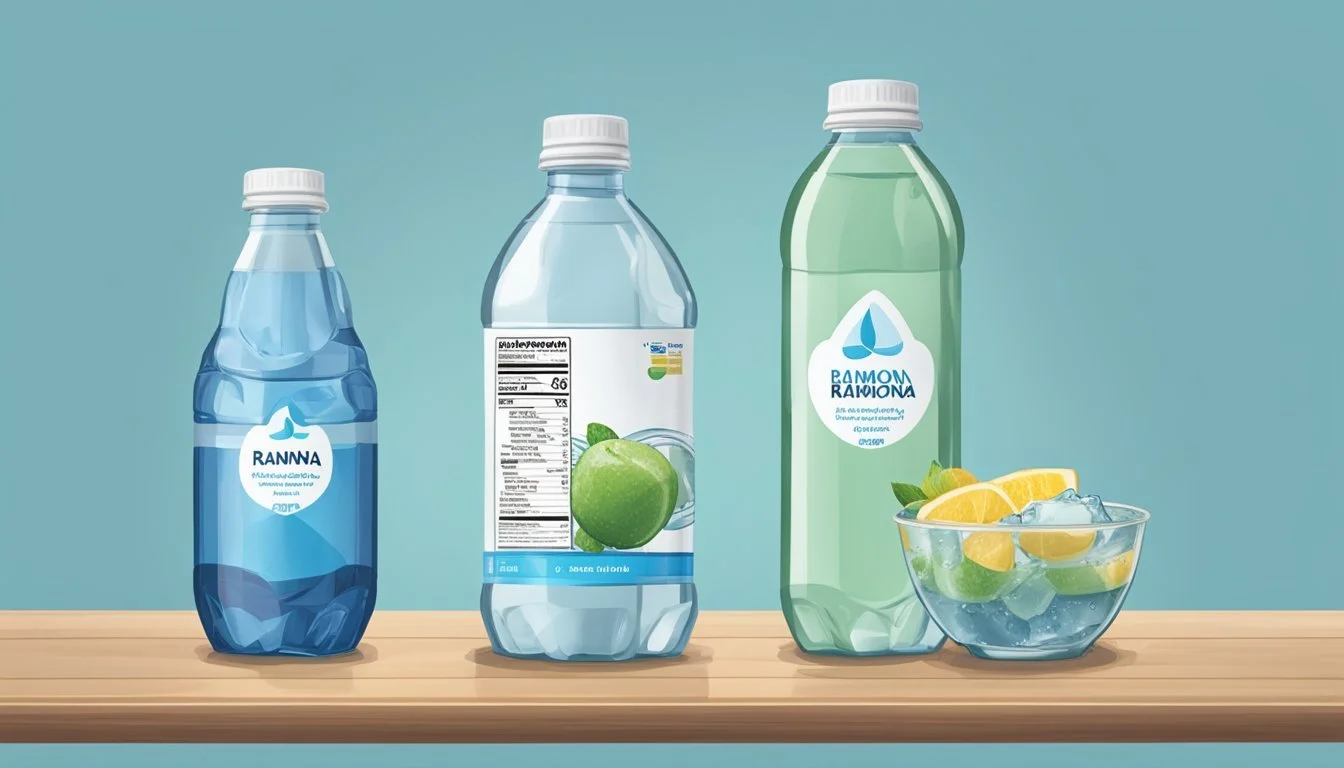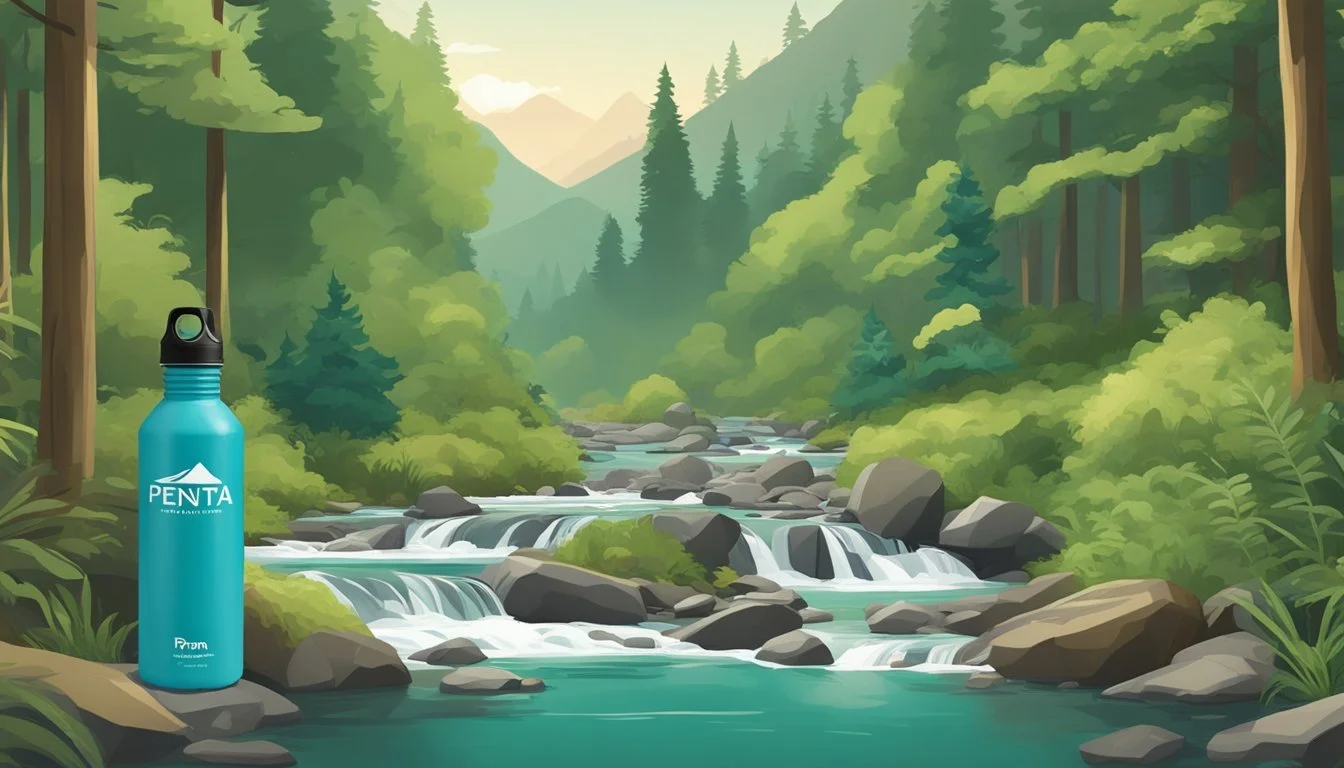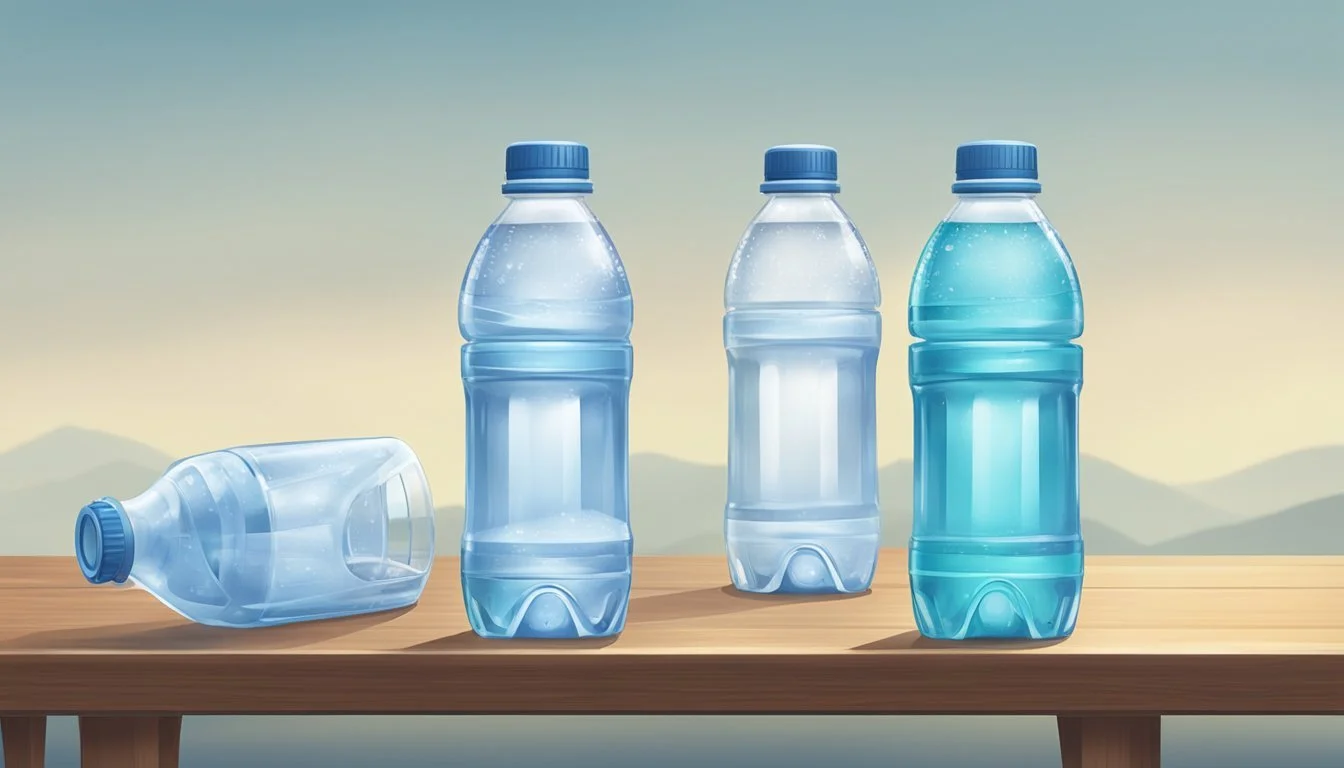Penta vs. Ramona
Which Bottled Water is Better for You?
When it comes to choosing the best bottled water, two brands that often surface are Penta and Ramona. Both promise superior hydration and health benefits but differ significantly in their sourcing and processing methods. This comparison aims to provide a clear perspective on which option might be better for your needs.
Penta is renowned for its ultra-purified water, free from impurities and contaminants. It undergoes a unique 13-step purification process, ensuring that what you drink is as pure as possible. On the other hand, Ramona touts itself as natural spring water, sourced directly from underground springs, preserving natural minerals that can positively impact health.
For those seeking purely purified water, Penta is the better choice. Its meticulous filtration process guarantees a level of purity unrivaled by many other brands. Ramona, while excellent for those desiring the benefits of natural minerals, may not match Penta's purity but offers a refreshing taste that some might prefer. This guide will delve deeper into these distinctions to help you decide which bottled water best aligns with your hydration and health goals.
History and Brand Overview
Penta Water and Ramona Water, two prominent brands in the bottled water market, have unique histories and development pathways that set them apart.
Penta Water: Origin and Development
Penta Water was founded with a mission to provide ultrapure water. Using a proprietary 13-step purification process, Penta ensures that their water is free from impurities and contaminants. The brand emphasizes its use of advanced technology to achieve high levels of purity, making it a favorite among health-conscious consumers.
The company's origin dates back to the early 2000s, when it began leveraging groundbreaking advancements in water purification. Penta claims its product undergoes additional steps beyond standard filtration, including ozonation and UV light treatment, to eliminate potential toxins. Their commitment to purity has positioned Penta as a premium choice in the bottled water market.
Ramona Water: Brand Journey
Ramona Water has a more traditional approach, rooted in sourcing its water from natural springs. Established over three decades ago, Ramona prides itself on the natural mineral content and balance found in its water. The water is sourced from protected spring locations, which contributes to its reputation for clean and refreshing taste.
Throughout its journey, Ramona has focused on sustainability and eco-friendly practices. The brand uses BPA-free plastic bottles and has initiatives aimed at reducing carbon footprints. This commitment to the environment, along with its natural sourcing, has garnered a loyal customer base that appreciates both the taste and the ethical considerations of the brand.
By understanding the meticulous purification techniques of Penta and the environmentally friendly approach of Ramona, consumers can make an informed choice based on their personal preferences and values.
Water Quality and Source
Comparing Penta and Ramona involves examining their water sources and quality. These attributes provide insight into what each brand offers to its consumers.
Understanding Penta Water's Source
Penta water is known for its purity. It undergoes an elaborate purification process that includes multiple steps of filtration and treatment. This results in water that is almost entirely free from impurities and contaminants.
The source of Penta water is subjected to reverse osmosis and ultraviolet light treatment. This ensures that the final product has minimal mineral content and no harmful chemicals. The goal is to provide the purest form of water possible. This meticulous purification process distinguishes Penta as a brand focused on delivering clean and safe drinking water.
Exploring Ramona's Natural Spring Water
Ramona water is sourced from natural springs, often nestled in pristine environments. This natural spring water inherently contains a rich mineral content, including essential minerals such as calcium and magnesium.
The water source for Ramona is carefully protected to maintain its natural purity. The spring water is collected with minimal processing to preserve its natural properties. This emphasis on sourcing from natural springs sets Ramona apart, offering water that boasts balanced mineral content and a refreshingly natural taste. Ramona caters to consumers who prefer water that retains its natural composition and minerals.
Purification and Filtration Processes
Both Penta and Ramona bottled waters undergo rigorous purification and filtration processes to ensure the highest quality and safety for consumers. The primary methods used include reverse osmosis and various forms of sterilization and deionization.
Penta's Patented Hydro-7 Filtration
Penta utilizes a patented Hydro-7 filtration process which transforms naturally sourced water. This extensive 11-hour process includes several stages:
Micron Filtration
Reverse Osmosis
Deionization
Ultraviolet Light Exposure
Ozonation
These stages remove contaminants such as heavy metals, fluoride, chlorine, and other harmful chemicals like Methyl tert-Butyl Ether (MTBE), lead, bisphenol S (BPS), and bisphenol A (BPA). This results in exceptionally pure and safe drinking water.
Ramona's Filtration and Purity
Ramona's filtration process also emphasizes purity but differs slightly in its approach. The main stages include:
Activated Carbon Filtration
Reverse Osmosis
Microfiltration
Ramona's water begins with activated carbon to remove large particles and chemicals. Reverse osmosis then targets smaller contaminants and impurities such as sodium, nitrates, and chlorine. The final step, microfiltration, ensures that any remaining particles are removed.
Minerals are sometimes added back for taste. This comprehensive approach results in a high level of purity, making Ramona water both safe and flavorful.
Nutritional Comparison
Penta and Ramona each offer unique nutritional benefits that cater to different preferences when choosing bottled water. This comparison looks at the mineral enhancements in Penta and the electrolyte infusion in Ramona.
Mineral Enhancements in Penta
Penta water is known for its ultra-pure composition, achieved through a patented 13-step purification process. As a result, Penta contains minimal total dissolved solids (TDS).
Key Enhancements:
pH Level: Slightly alkaline, contributing to neutralizing the body's acidity.
Mineral Content: Limited presence of natural minerals like calcium and magnesium due to extensive purification.
Purity: Free from artificial additives and preservatives, ensuring a clean taste.
While Penta's focus is on purity, some may find the lack of common minerals less beneficial for daily hydration needs.
Electrolyte Infusion in Ramona
Ramona enhances its water with a blend of electrolytes, aiming to support hydration and balance the body's ion levels. This infusion benefits those seeking to replenish electrolytes lost through physical activity or daily routines.
Key Infusions:
Electrolytes: Sodium, potassium, and magnesium are added to support hydration and muscle function.
pH Level: Maintains a balanced level, conducive to bodily functions.
Ionized Water: Beneficial for faster absorption and replenishment.
Ramona's focus on electrolyte enhancement makes it a compelling choice for those needing quick, effective hydration, especially after workouts.
Health and Hydration Effects
Both Penta and Ramona bottled waters promise health benefits and efficient hydration. Each brand has unique characteristics impacting their effectiveness in these areas.
Health Benefits of Penta Hydration
Penta water is known for its unique purification process, which removes impurities more effectively than conventional methods. This results in water with fewer contaminants, appealing to health-conscious individuals.
Penta's low mineral content ensures that it is gentle on the kidneys, making it suitable for people on low-mineral diets. Additionally, Penta claims their water undergoes a micro-filtration process to achieve significant purity.
This could benefit athletes or anyone looking to avoid additional mineral intake while staying hydrated. Penta's neutral pH balance is another health benefit, as it matches the human body's natural pH, potentially aiding in easier absorption and less acidic stress on the body.
Hydration Efficacy of Ramona
Ramona water, on the other hand, emphasizes hydration through its balanced electrolyte content. This makes it especially beneficial for athletes and active individuals, as electrolytes help maintain fluid balance and prevent dehydration during physical activities.
Ramona's natural mineral composition includes essential electrolytes like potassium and magnesium, which can enhance hydration efficiency. These minerals support overall hydration better than plain water by aiding in the retention of fluids in the body.
Moreover, Ramona water is sourced from natural springs, ensuring its mineral content is both natural and beneficial for maintaining hydration levels. This aspect is particularly advantageous for those who engage in intense physical activities or require consistent hydration throughout the day.
Both Penta and Ramona have distinct attributes that cater to different hydration and health needs, making them viable options depending on individual preferences and requirements.
Taste Profile
When considering the taste profiles of Penta and Ramona bottled waters, factors such as palate pleasure, solute content, and overall flavor come into play. Each brand offers unique characteristics that cater to different preferences.
Palate Pleasure: Sampling Penta
Penta water is notable for its exceptionally clean taste. This can be attributed to its rigorous purification process that removes impurities and dissolved solids, resulting in a highly pure water.
The minimal presence of solutes gives Penta a crisp, smooth profile that many find refreshing. Its taste is often described as subtle, with no lingering aftertaste, making it a preferred choice for those sensitive to flavors in their water.
The Flavor of Ramona
Ramona water, on the other hand, presents a more distinct flavor. It contains natural minerals and dissolved solids that contribute to its taste, giving it a slightly earthy yet refreshing profile.
This is particularly appealing to those who enjoy a more robust taste in their water. The solute content in Ramona imparts a richer mouthfeel, distinguishing it from the more neutral taste of Penta. Some may find this complex flavor invigorating and satisfying.
Environmental Impact and Sustainability
Penta and Ramona are evaluated for their environmental footprints, sustainability practices, and packaging materials. Each brand takes a different approach to addressing environmental concerns.
Evaluating Penta's Environmental Commitment
Penta’s focus lies on ensuring purity, but this comes with the drawback of using plastic bottles. These bottles are BPA-free, making them safer for consumers, yet they still contribute to plastic waste. Penta does promote recycling, though the impact of this depends heavily on consumer participation.
Their emphasis on water purity involves extracting and processing water, which has its own environmental costs. The exact practices and their efficiency in minimizing environmental damage are crucial for understanding Penta’s sustainability standing.
Key Points:
Bottles: Made from BPA-free plastic.
Recycling: Encouraged but effectiveness varies.
Purification Process: Could have environmental implications.
Evaluating Ramona’s Environmental Commitment
Ramona’s strategy often emphasizes eco-friendly packaging. Utilizing materials like paper-based cartons reduces reliance on plastic, thus cutting down on plastic waste. These cartons are often recyclable, supporting a circular economy.
Moreover, Ramona focuses on sustainable sourcing and the entire lifecycle of the packaging. This involves reducing carbon footprints and employing renewable resources. These practices make Ramona a potentially more environmentally friendly option compared to plastic-dependent packaging alternatives.
Key Points:
Packaging: Paper-based, recyclable.
Lifecycle: Designed to minimize environmental footprint.
Sourcing: Emphasis on sustainability and renewable resources.
Market Presence and Consumer Trust
The market presence of both Penta and Ramona provides crucial insights into their popularity and the level of consumer trust they command. Below, these aspects are explored in detail.
Penta's Standing in the Bottled Water Industry
Penta has carved out a niche by focusing on water purity, making it a premium choice for discerning consumers. Its BPA-free plastic bottles assure safety, attracting health-conscious buyers.
Their emphasis on purity sets them apart in a crowded market. Robust marketing strategies have bolstered Penta's reputation, resonating especially with those prioritizing quality over cost.
Penta's market presence is underscored by its consistent branding and high consumer trust. Despite intense competition, it remains a prominent player, attributed largely to its rigorous quality standards and transparent practices.
Ramona's Brand Perception
Ramona, on the other hand, leverages its eco-friendly packaging to appeal to environmentally conscious consumers. Its use of sustainable materials without compromising water quality positions it favorably in the market.
Popularity among eco-conscious buyers underpins Ramona's brand perception. Customer trust is reinforced by their transparent environmental commitments, making it a reputable choice for those valuing sustainability.
Ramona's standing is further amplified by effective marketing that highlights its green initiatives. This approach not only enhances its market presence but also attracts a loyal customer base focused on environmental impact.
Packaging and Accessibility
When comparing Penta and Ramona bottled waters, evaluating the packaging and accessibility is critical for making an informed decision. Not only does this involve the design and materials used, but also the ease with which consumers can find and purchase these products.
Penta Water Bottle Design
Penta packaging prioritizes safety and purity. The bottles are made from BPA-free plastic, mitigating risks associated with Bisphenol A. Each bottle is designed for practical use, with an easy-to-open cap and a sturdy structure that maintains the integrity of the water's purity.
Lead-free materials further enhance consumer trust, ensuring a safe drinking experience. The sleek design of Penta bottles also caters to modern aesthetics, without compromising on function. Their availability in various sizes makes it convenient for different use cases, whether it's for a gym session or a day at work.
Availability of Ramona
Ramona's distribution network ensures high accessibility, making it easy for consumers to find this bottled water in major retail stores and online platforms. The widespread availability reflects the brand's commitment to being user-friendly.
Ramona’s packaging is user-centric, with attention paid to both design and environmental impact. The bottles are conveniently sized and easy to carry, catering to busy lifestyles. Prominently featured in supermarkets, convenience stores, and online marketplaces, Ramona's accessibility extends beyond physical stores, ensuring that it can be effortlessly ordered and delivered to consumers' homes.
Certifications and Compliance
Penta and Ramona are both recognized brands in the bottled water market, with distinct certifications and regulatory compliances that ensure their products are safe and of high quality.
Penta's Quality Certifications
Penta prides itself on its rigorous quality control measures. It holds several certifications that underline its commitment to health and safety.
Penta is NSF certified, indicating it meets global standards for public health protection. The NSF certification ensures its water is free from contaminants and harmful chemicals.
In addition, Penta water undergoes a 13-step purification process that removes impurities and ensures high-quality drinking water. This process includes reverse osmosis, ultraviolet disinfection, and ozonation.
Beyond NSF, Penta is also certified by ISO 22000, an international standard focused on food safety management. This certification confirms Penta's adherence to quality and safety from the source to the bottle.
Regulatory Approval for Ramona
Ramona water complies with comprehensive regulatory standards to ensure consumer safety and health. It is important to note that Ramona adheres to FDA regulations, which certify its water meets federal safety and labeling standards.
Ramona also holds EPA compliance, ensuring the water sources and bottling processes meet environmental protection criteria. This helps safeguard the health of consumers by ensuring clean and safe water.
Furthermore, Ramona is certified by the IBWA (International Bottled Water Association). This certification indicates adherence to industry best practices for water sources, bottling, and distribution, ensuring Ramona maintains high quality and safety standards.
Comparative Summary
This section compares Penta and Ramona bottled water, highlighting their unique attributes, differences in sourcing, mineral content, and overall consumer preference.
Side-by-Side Analysis
Sourcing and Purity:
Penta water is sourced from a protected aquifer. It undergoes a 13-step purification process, removing impurities to create ultra-pure water. Ramona, sourced from underground springs, retains its natural mineral content.
Mineral Content and Taste:
Penta has minimal mineral content, leading to a very clean taste. Ramona offers a slightly mineralized profile, enhancing its flavor. Consumers often prefer this mineralized taste, similar to well-known brands like Fiji and Smartwater.
Product Packaging and Availability:
Penta focuses on eco-friendly packaging. It emphasizes a clean, minimalistic design. Ramona uses more traditional packaging and is widely available. This positions it alongside popular brands such as Aquafina and Dasani.
Recommendations and Final Thoughts
Consumer Preference:
For those seeking ultra-pure water, Penta is ideal due to its extensive purification process. It's recommended for people who prefer a neutral taste. Comparatively, Ramona suits people who enjoy a touch of minerals in their water, similar to Essentia.
Environmental Impact:
Penta’s commitment to eco-friendly packaging makes it a good choice for environmentally conscious consumers. Ramona, while widely available, could benefit from more sustainable packaging solutions.
Value for Money:
Both brands are premium, yet they offer different experiences. Buyers should consider whether purity or mineral taste matters more. In terms of availability and price, Ramona might be the more convenient option but Penta offers better purity.
More About Penta
Mountain Valley Spring Water vs Penta: Which Bottled Water is Better?
Penta vs Richard's Rainwater: Which Bottled Water is Better?
Penta vs Whole Foods Italian Still Mineral water: Which Bottled Water is Better?











